Optimal Home Climate: Top Best Roof Ventilation Methods Revealed
Seeking the best roof ventilation methods to safeguard your home and wallet? Roof ventilation is critical for preventing moisture damage, enhancing energy efficiency, and prolonging your roof’s lifespan. This guide outlines the top strategies, from active systems using fans to eco-friendly passive options, without overwhelming you with technical jargon. Find out which methods align with your needs, climate, and budget, ensuring an optimal home climate year-round.
Key Takeaways
-
Proper roof ventilation is essential for preventing moisture build-up, improving energy efficiency, and prolonging the lifespan of your roof.
-
There are both active and passive roof ventilation methods; active utilizes mechanical means such as fans, while passive relies on natural air flow and includes options like ridge and soffit vents.
-
In choosing the best roof ventilation system, homeowners should consider various factors such as local climate, roof design, and budget, as well as explore innovative solutions like solar-powered attic vents and smart vent technology.
The Importance of Proper Roof Ventilation
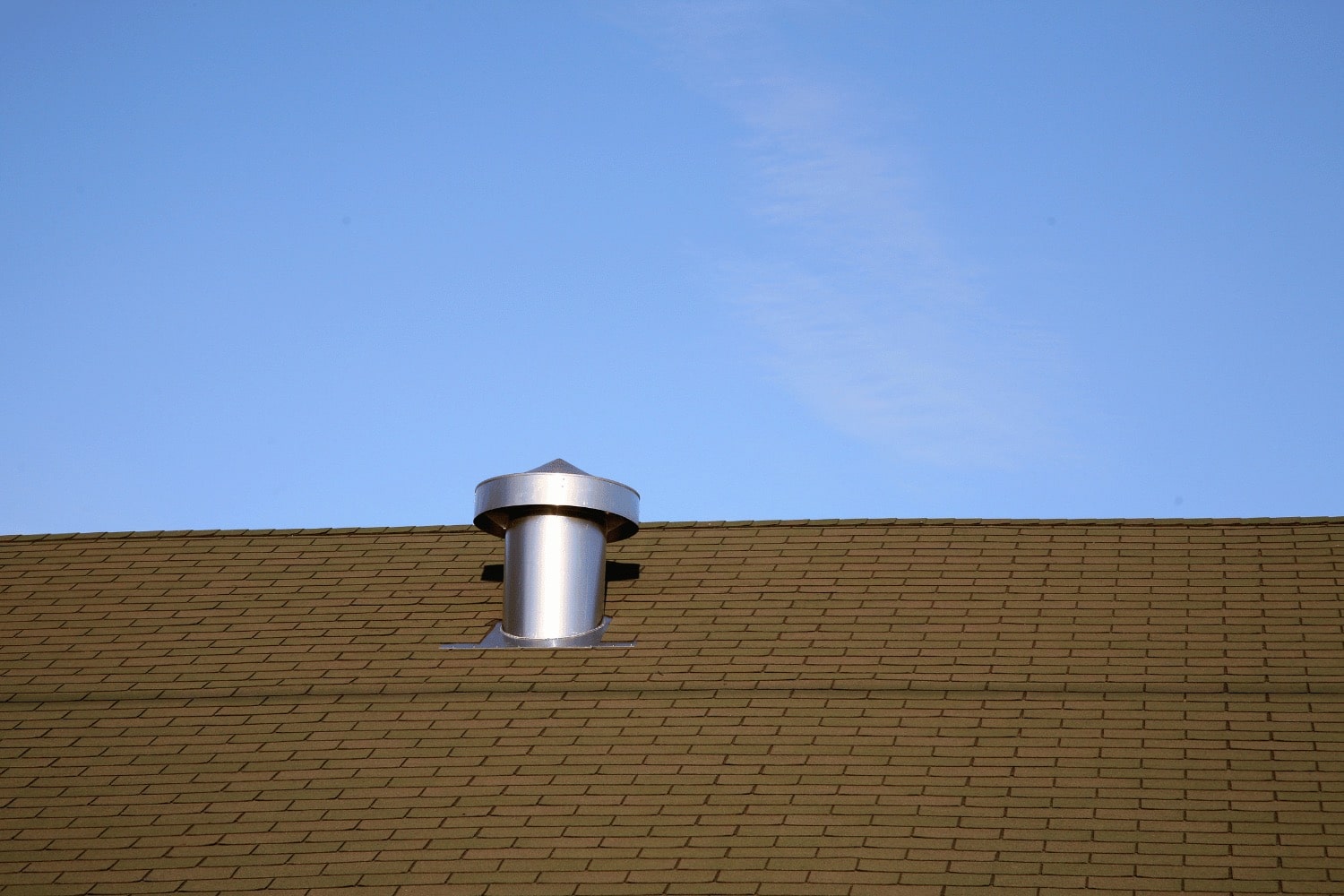
Imagine coming home on a cold, rainy day to find your attic filled with moisture, mold creeping along the walls, and structural damage that could spell disaster for your home. Sounds nightmarish, right? Well, this is the reality for many homeowners who overlook the importance of proper roof ventilation.
Maintaining the optimal home climate and preventing damage hinges on proper roof ventilation.
Preventing Moisture Damage
Moisture in your attic can be a silent destroyer, leading to mold, mildew, and structural damage over time. But how does moisture even build up in the attic? Well, let’s take a winter scenario. When you’re inside your home, activities like cooking, laundry, or even a hot shower can increase moisture levels.
Without proper roof ventilation to dispel it, this moist, warm air escaping into your attic can cause condensation on the inside of your roof deck.
Energy Efficiency
Next, we consider another crucial facet of proper roof ventilation – energy efficiency. We all know how scorching an attic can get during the summer months. This heat isn’t just uncomfortable; it can also increase your energy bills.
But how does roof ventilation come into play?
Prolonging Roof Lifespan
Have you ever considered that your roof’s lifespan could be reduced due to improper ventilation? Few people realize that ventilation is instrumental in fending off premature aging and damage to the roofing system.
Best Roof Ventilation Methods: Active vs. Passive
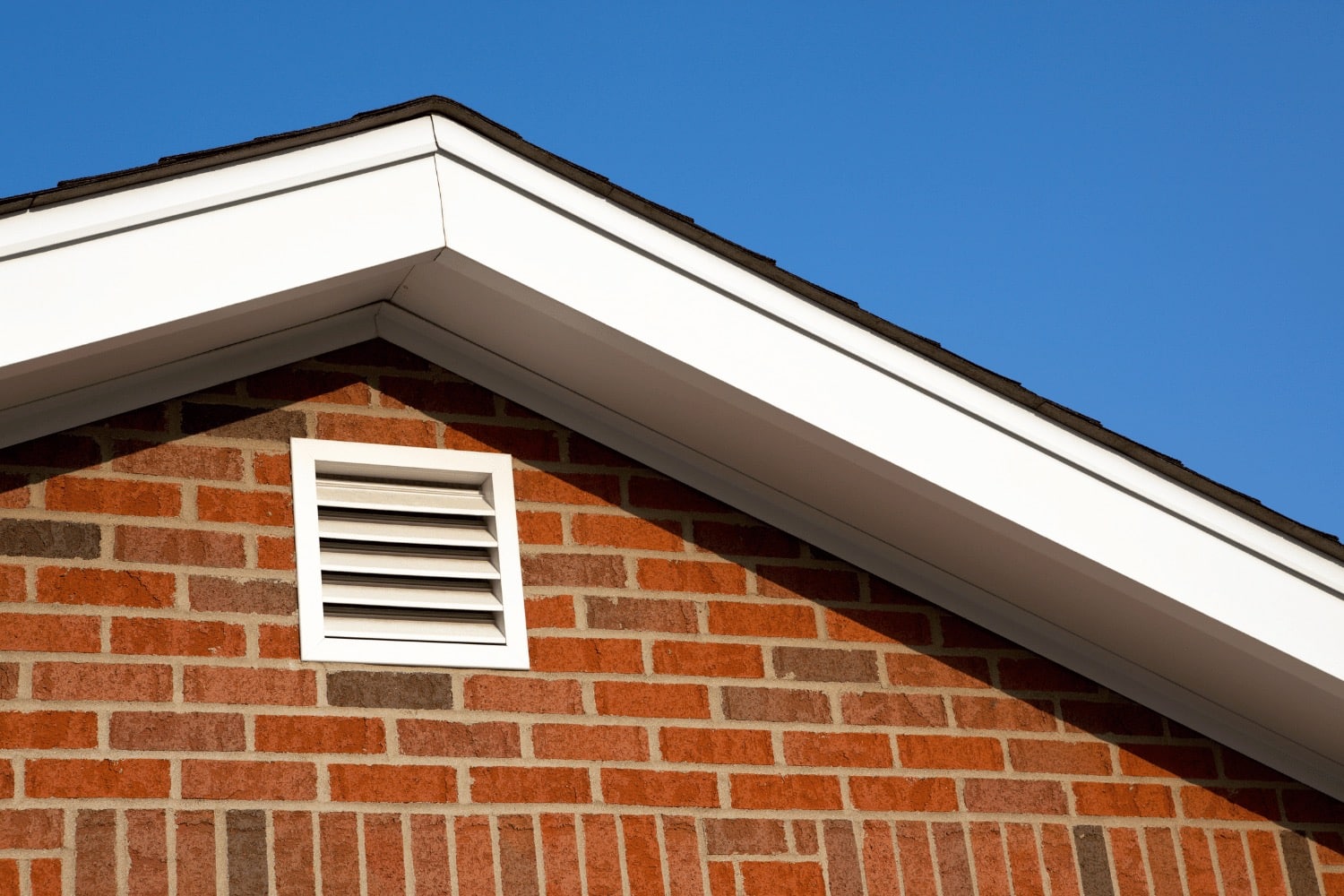
Having established why proper ventilation is essential, we can now explore the best roof ventilation methods. You’ve probably come across terms like ‘active’ and ‘passive’ ventilation while researching roof ventilation. But what do these terms mean?
Active Roof Ventilation
Active roof ventilation, as the name suggests, involves an active process of moving air in and out of the attic. It uses machines like fans or turbines to circulate air in the attic regardless of the weather.
Passive Roof Ventilation
Passive roof ventilation operates by harnessing natural air movement, leveraging the wind to circulate air through the attic and expel it from the building, all without the need for electricity. This system provides an energy-efficient and environmentally friendly ventilation solution.
Top Exhaust Vents for Optimal Home Climate
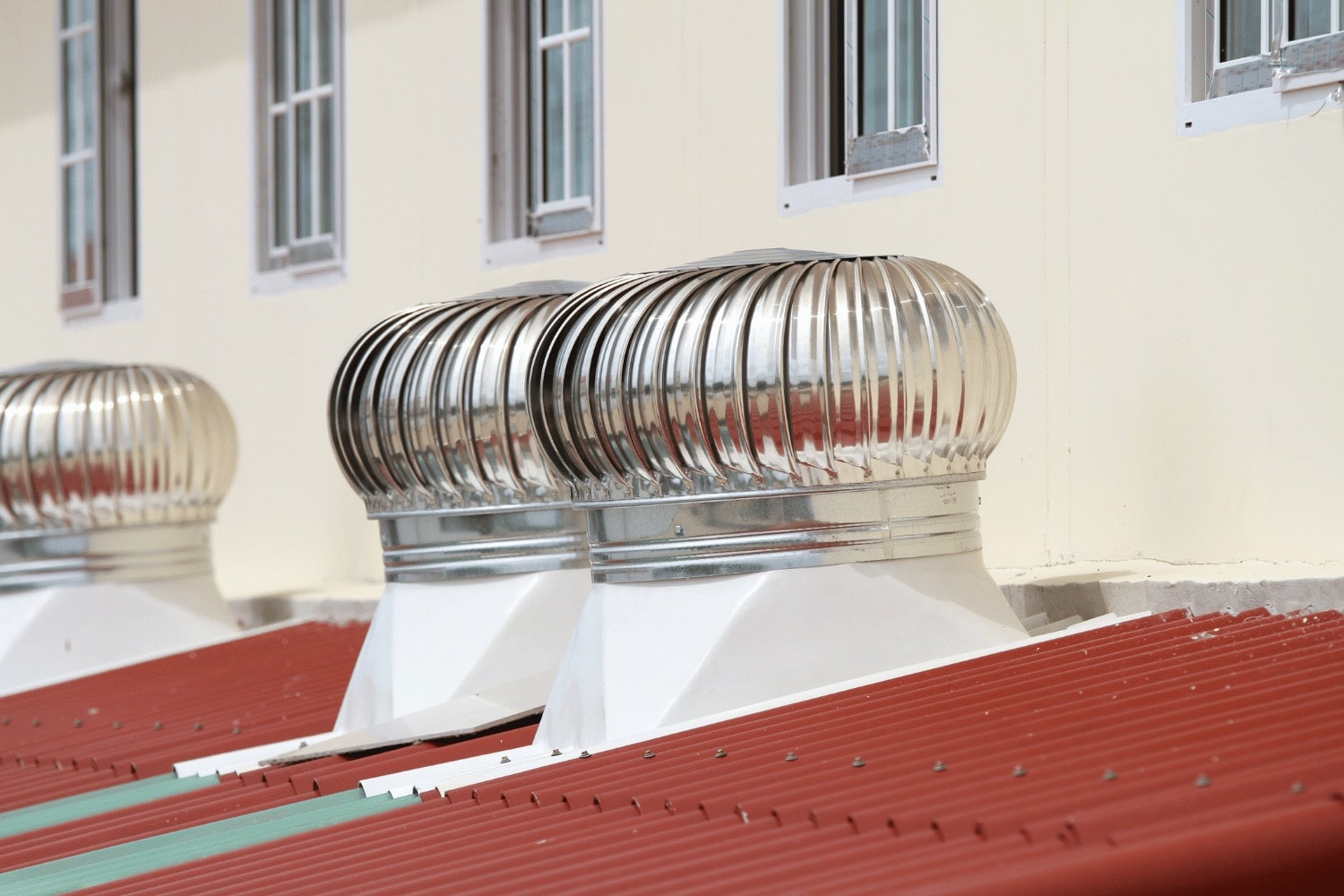
Transitioning from theory to practice, we’ll start by looking at the top exhaust vents for maintaining an optimal home climate. These vents play a key role in driving out hot air from your attic, fostering upward airflow and promoting natural air circulation.
Ridge Vents
You’ve probably seen these long, slim vents running along the ridge of a roof – these are ridge vents, and they’re the most common type of exhaust vents. Box vents, on the other hand, are another type of vent that can be found on roofs, while off ridge vents provide an alternative option for ventilation.
Turbine Vents
When it comes to eco-friendliness and maintenance, turbine vents are hard to beat. These vents operate using wind to pull air up and out from the attic, reducing the risk of mold and eliminating the need for electricity.
Leading Intake Vents for Fresh Air Circulation
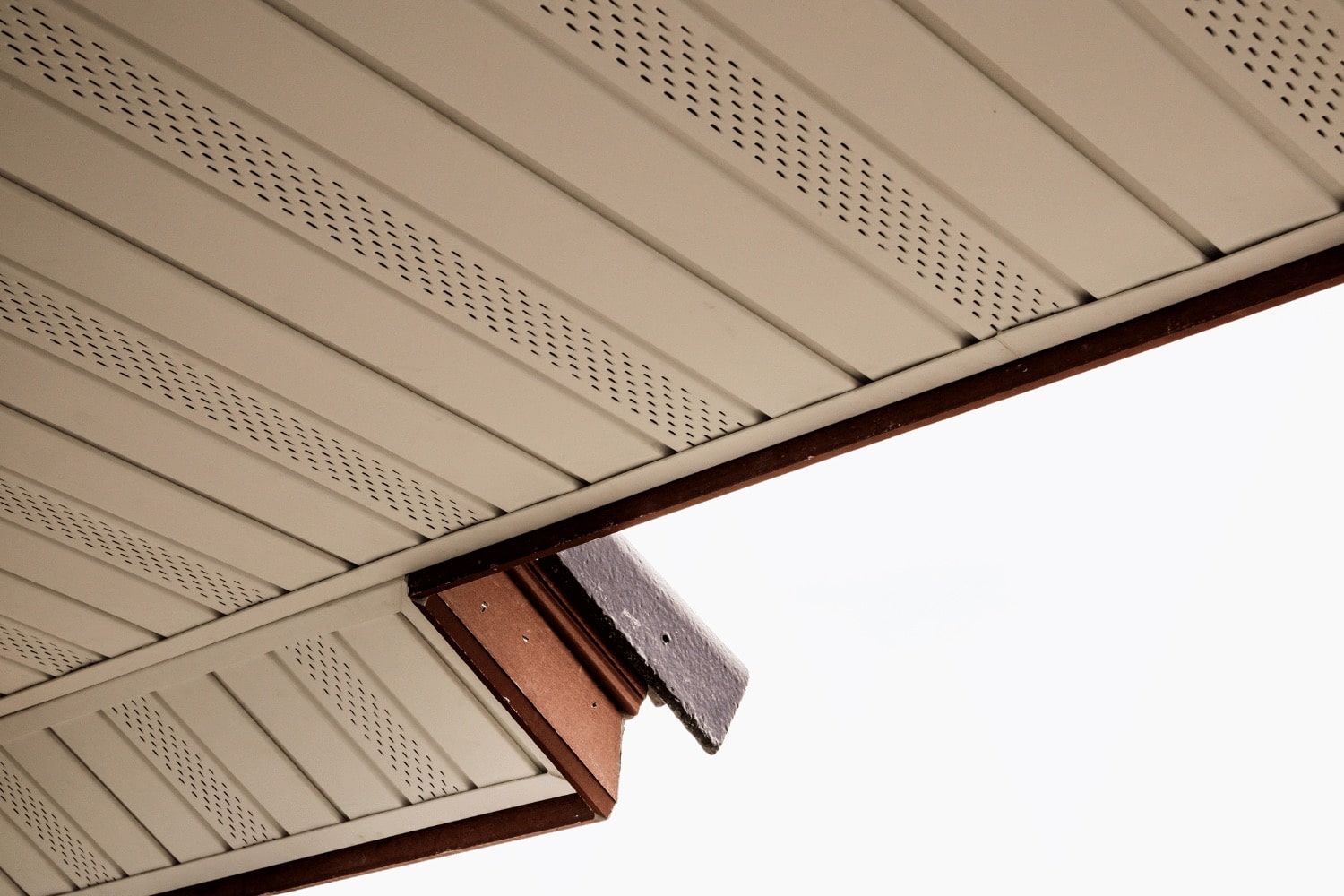
Intake vents, while just as important as exhaust vents in letting cool air into the attic, serve a different function – they vent hot air. Together, intake and exhaust vents form a balanced system that supports a full cycle of air movement, establishing a conducive indoor climate.
Soffit Vents
Soffit vents are a critical component of roof ventilation systems, allowing cooler air to enter the attic space and facilitate pushing hot air out through drip edge vents.
Gable Vents
Gable vents are passive vents located at the gable ends of a home, designed to encourage cross-ventilation by allowing air to freely move in and out of the attic.
Innovative Roof Ventilation Solutions
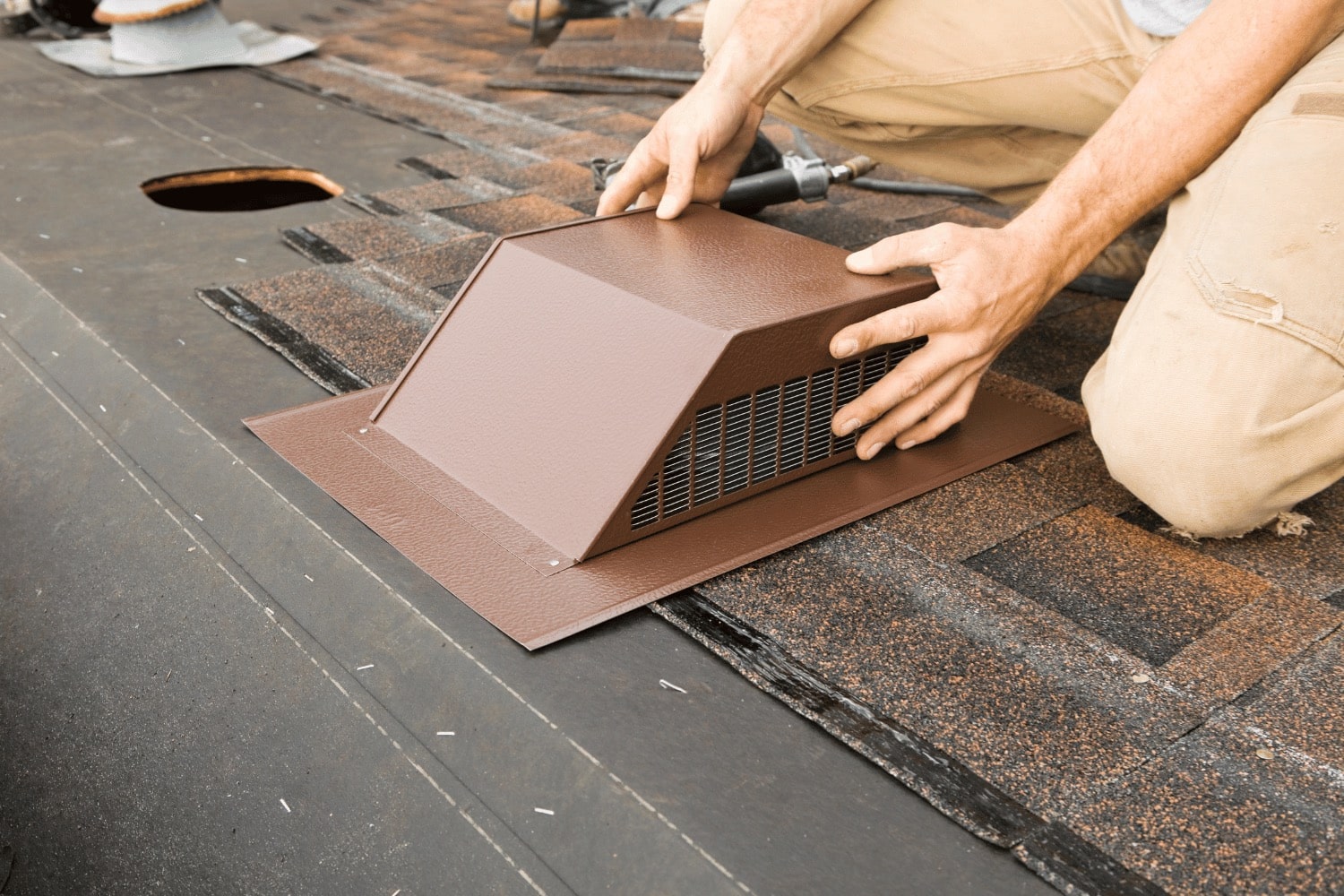
Like all fields, the roofing industry is subject to innovation. As homeowners become more conscious of energy efficiency and environmental sustainability, new solutions are cropping up, offering even more options for roof ventilation.
Solar-Powered Attic Vents
Harnessing the power of the sun, solar-powered attic vents are a great way to reduce your carbon footprint while ensuring proper roof ventilation and effective attic ventilation.
Smart Roof Vents
In the era of smart homes, why should roof vents be any different? Enter smart roof vents – ventilation solutions that leverage advanced technology and sensors to optimize ventilation performance and energy efficiency.
Factors to Consider When Choosing Roof Ventilation Methods
From all we’ve discussed so far, it’s clear that roof ventilation is not a one-size-fits-all solution. Several factors can influence the effectiveness of a ventilation system. Let’s explore the main ones.
Climate Considerations
The climate where you live significantly influences the choice of ventilation method for your roof.
Roof Type and Design
The type and design of your roof can also affect how well different roof vent types work.
Budget Constraints
Undeniably, budget is a major consideration in all home improvement ventures, roof ventilation included.
Summary
To wrap up, proper roof ventilation is key to maintaining an optimal home climate and preserving the longevity of your roof.
Frequently Asked Questions
What services does Rapid Roofing offer?
Rapid Roofing offers a comprehensive range of services, including roofing, gutters, siding, skylights, and more, to meet your home improvement needs.
Does Rapid Roofing provide financing options?
Yes, Rapid Roofing offers financing options, including programs with Michigan Saves. This can help make your roofing project more affordable and manageable.
Does Rapid Roofing help with insurance claims?
Yes, Rapid Roofing is experienced in handling insurance claims and offers assistance in streamlining the process. This can help you navigate the insurance claim process more effectively.
What are the benefits of choosing Rapid Roofing for flat roof repairs?
Choosing Rapid Roofing for flat roof repairs ensures you get timely and expert services customized for commercial properties. Our specialized team is equipped to handle the unique challenges of flat roofs.
How does Rapid Roofing provide affordable roof replacement in Battle Creek, MI?
Rapid Roofing provides affordable roof replacement in Battle Creek, MI, by offering competitive financing options and using high-quality materials. This ensures that customers have access to flexible payment plans and durable roofing solutions.

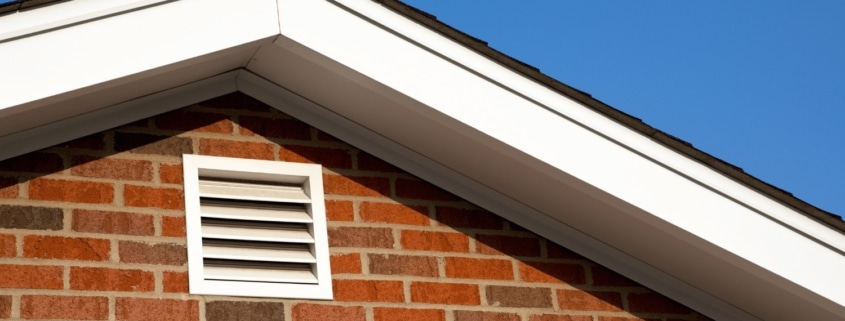
 Residential Roofing
Residential Roofing Storm Damage
Storm Damage Multi-Family Homes
Multi-Family Homes
